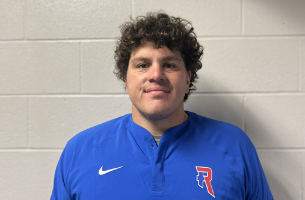SPEEDWAY, Ind. — On Thursday, Cusick Motorsports and DragonSpeed announced a partnership to field a car in the Indianapolis 500 for Stefan Wilson. Their entry is the 33rd entry for this year’s race, guaranteeing that the race will have a full 33-car field when the green flag drops on May 29th.
The deal was made at essentially the 11th hour with many wondering as May 1st flipped by in everyone’s calendar and we still only had 32 cars entered in “the Greatest Spectacle in Racing.”
Wilson said the reason why it took so long for them to put a deal together was a plain lack of manpower available within the industry to put a full team together.
“A big issue a lot of teams are running into is personnel,” Wilson said. “Having that bandwidth to take on more cars or commit to the 500 in that kind of time. We just kept hitting stumbling blocks.”
Similarly, Beth Paretta, the Team Principal of Paretta Autosport, said back in April while announcing a three-race program for Simona de Silvestro this season that she was unable to add the Indianapolis 500 to that program because of a lack of people available to run the team.
It’s indicative of a growing concern among the rest of the IndyCar paddock. There simply aren’t enough bodies to make a full-team, especially with more teams devoting the resources they used to have available for part-time/one-off entries in the Indianapolis 500 to more full-time series entries.
That makes the window for collaboration with smaller, up-and-coming teams like Cusick and DragonSpeed much smaller.
“It’s almost a victim of its own success in a way, but it only hurts at the (Indianapolis Motor Speedway),” said DragonSpeed CEO Julian Elton. “There are not many other teams that can come and do one-offs like you could in the past. It’s going to be a tough one to navigate, I’m sure, for the Speedway.”
On the flip side, IndyCar has not struggled to have less than 24 full-time cars per race in recent years, which shows much more sustainability within the series since reunification in 2011.
Elton said there will need to be “a movement” to have available engines and chassis for smaller teams to be able to make entry to qualify for the Indianapolis 500. At the moment, the IndyCar Series is only able to handle full-budget, top-driver entries consistently at the 26-28 number. The rest of the entries, he says, will be a challenge year over year unless something changes.
Wilson said another factor to consider is the growth of auto racing as a whole, with record-sized fields in other racing series, especially in sportscars and Road to Indy.
“Each one of those cars in all these series is utilizing personnel,” Wilson said. “It’s just making it harder to find the right personnel to do these one-off entries because they are already committed for the year or they have a conflict in their schedule.”
Wilson said if the deal between Cusick and DragonSpeed, with technical help from AJ Foyt Racing, didn’t happen, it would have been very difficult to get to 33 cars for this year’s Indianapolis 500.
The race has only ever had fewer than 33 cars once in its history.
The 1947 Indy 500 had just 30 cars take the green flag. The reason for that was a dispute between the drivers union at the time, the American Society of Professional Auto Racing, and the AAA Contest Board over the purse size of the race. AAA (the American Automobile Association) was the sanctioning body of the race back then.
Many west coast-based drivers boycotted the Indianapolis 500 in 1947, resulting in not enough drivers being available for the 35 entered cars.













